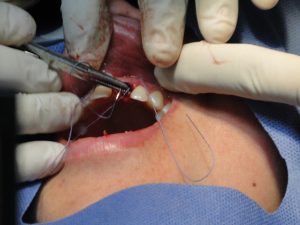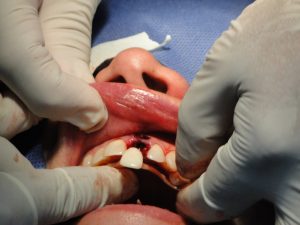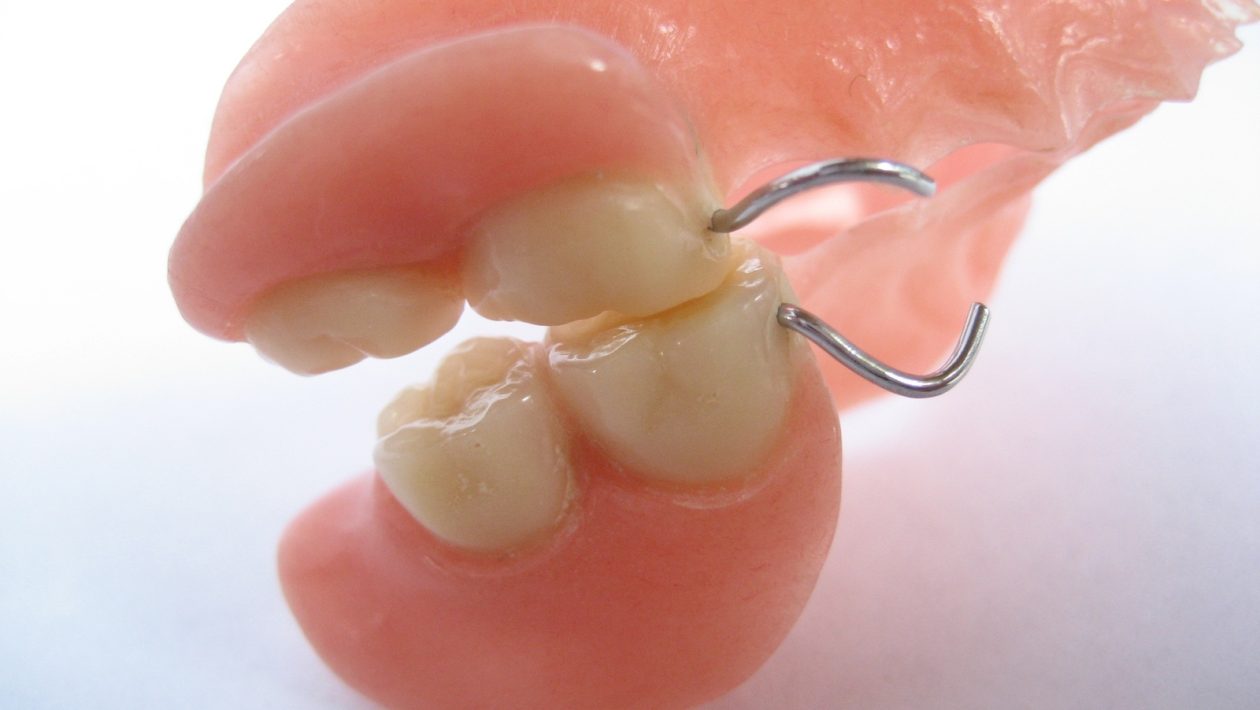The thought of having a permanent part of our body removed is scary. We don’t know how it feels until we find a void. But with aging and the natural course of decaying, activities like tooth removal become more common than we think. Mental preparation takes foremost importance, and so does considering tooth extraction healing stages.
If you have undergone the extraction procedure or plan to do it soon, you should prepare early. It will make your situation manageable and keep you mentally strong to withstand pain.
Table of Contents
Day by day tooth extraction healing stages
Day 1
The first day after tooth removal is crucial. Interestingly, the healing process starts immediately. Like any other body part, bleeding after tooth removal is the first change to expect. The affected area suddenly becomes tender and experience blood clot.
There will be pain as soon as the anesthesia starts to wear out, and you will have a pain reliever prescribed to reduce pain. If the pain exceeds bearable levels, you might want to sleep. It is best to take the day off so you get adequate rest.
Day 2
Rest, nap, and sleeping position must be elevated to not disrupt tooth extraction healing stages.
After 20 to 30 hours from surgery, there will be swelling. Apply an ice pack over your facial portion around the affected area to reduce it.
Day 3
The stages of tooth extraction healing now work full-fledged to naturally heal the hurt part of your body. You start adapting to the void created inside the mouth as well.
Your dentist will have special measures for post-op care, and you must abide by them to minimize the chances of infection.
As per recommendation, you must continue consuming food that does not exert pressure on your mouth. Smoothies, soups, and comfort food that don’t make you chew are your best friends at this stage. These do not trigger the blood clot and let it naturally heal.
Spitting, smoking, and pointy cutlery usage must be avoided.
Day 4, 5, 6
By now, the void in your mouth heals entirely but leaves it sore and tender. It is still necessary to not spit, smoke or use pointy cutlery that can hurt the blood clot.
If your dentist allows, rinse your mouth with saline water to keep it free from infection.
Ask your dentist if you can maintain regular oral hygiene by now if it does not impact the voided part.
Day 7
After one week, your dentist will remove the stitches as the blood clot is completely formed. Some clinics offer stitches that dissolve on their own. If that is what you get done, the stitches have dissolved by now.
As per dental recommendations, you can eat chewier food. But if you do not feel right yet and the pain remains, it is best to continue eating soft food.
Some food that you know can hurt you during healing tooth extraction stages is best avoided. These include popcorn, seeds, chocolate, and nuts.
Day 15
After two weeks, the socket heals completely, but the tissues remain tender and vascular. Brushing around the area requires gentleness. You must still eat soft food and keep debris away from the void to prevent infection.
Going all-in on food at this stage can rupture the new layer forming around the gum tissue. Continue fluids to best avoid such discomfort during this tooth extraction healing stage.
Day 21
By the end of three weeks, your tooth removal area heals completely, but the sensitivity remains. You will know your condition best to incorporate more food but should still avoid elements that can stick to the void.
Oral care across other teeth must be as usual, ensuring the affected area is not hurt. Gently brushing and flossing will be just fine. Saline water cleaning will keep infections at bay.
How does your mouth feel after tooth extraction?
Are the tooth extraction healing stages our real concern, or is it how it makes us feel?
Picture this: you have a set of teeth that helps you talk, eat, and support your jawline. One fine day, you had to remove one tooth and probably a few more in due course of time.
You remember your granny’s smile with no teeth and the dentures that came soon after. It might feel scary when you think how your mouth will look when you laugh. But the internal feeling will matter more after you undergo the removal process.
You will not feel anything during the extraction due to the mandatory anesthesia that your dentist will inject before removal.

But why is anesthesia necessary?
The pain of tooth extraction without anesthesia is excruciating. It might make a patient faint if not numbed before removal.
As the impact of the injection wears out, you gradually feel the pain and void from your socket. You might experience discoloration on your face, stiff jaw, and sore throat.
Tooth fragments trying to fight their way onto the empty socket is also a common phenomenon. It will gradually come out and wash away when you cleanse your mouth. If the feeling is uneasy, discussing it with your dentist to clean it thoroughly is best.
While the tooth extraction healing stages are natural and gradual, there are measures to maintain for quick recovery. The stages and suggestions stated above recommend just that. But the best person to turn to is your dentist. The expert will know your case thoroughly and customize the care chart according to your condition.
Signs your tooth extraction is healing correctly
Now that you know the fundamentals of tooth extraction healing stages, how can you confirm it is going as it should?
There are post-op symptoms that you will experience. These include bleeding, pain, and swelling. Stiffness in the jaw area is normal, and so are fragments of the tooth irritating the affected area inside.
If the irritation remains and you struggle to cleanse out fragments, you might need your dentist’s help. It is best to ask the doctor about the remains immediately after extraction. The risk of consuming fragments with food is detrimental.
Here are some circumstances when you might need expert help:
- if the discomfort becomes unbearable
- if you are unable to talk
- no type of food seems consumable
- lack of sleep due to excruciating pain
- consumed fragments by mistakes
How do we speed up the healing process?
There are many tooth extraction healing stages pictures on the internet, but they won’t be accurate to yours. While standard healing processes are given across this post, each person has a different experience.
Some have excessive bleeding, while some have light. The blood clot heals gradually, while it takes more than a week for others.
Your post-op oral care also makes a huge difference in the healing process. So, the best thing to do is maintain a few habits that can quicken healing.
Here are things to do post tooth extraction:
- let your mouth rest for 24 hours after extraction
- wash your mouth with saline water 24 hours post-extraction
- keep teeth clean by gently brushing and flossing them
- avoid the affected area during oral cleansing
- consume soft food that comforts the void
- avoid sticky, hard, and chewy food
- chew food from the opposite side of the affected area if you have to
- keep the head elevated when sleeping
- don’t smoke or spit
Does face change after tooth extraction?
Any part of our body changes with mild disturbance to what it was originally supposed to be. Unfortunately, our jawbones change after teeth extraction. Across healing stages, the affected area gradually subsides from swelling. But the jawbone might never be the same again.
The change in jawbone shape depends on the alveolar ridge. The ridge holds our teeth and goes through resorption after extraction. You might lose the original height of the jawbone. It will also reduce by width to fill in the area where the void is created. The cheek-to-lip site looks different. But you can tell a major difference if you have more than one tooth extracted.
The impact of molar and premolar removal differs. Almost 50% of a bone’s width can change significantly across a one-year healing phase.
How long does it take for jawbone size to change?
It depends on the number of teeth you had to extract. If it was only one, the shape would continue to change according to wound healing. If wounds are large, for example, if you had to take a wisdom tooth out, the results will take longer. Simply put, the higher the degree of the alveolar ridge, the more time it takes to change.
You will at least take 30 days to see any visible change in your facial features. After 12 months, you can see massive changes. It is best to click tooth extraction healing stages photos to check before and after differences.
Many people opt for artificial teeth after removal. In such cases, your dentist will accurately fit a replacement, and you will find no changes in your jawbone.

Final thoughts
Tooth removals require immediate post-op x-rays to confirm the condition. Only then can your dentist suggest the healing process meant for you.
If not replaced artificially, it will take around 18 months to find no traces of having a tooth in the removed area. That’s also when you’ll know that the process is complete.
Frequently Asked Questions (FAQs)
1. How do I know if my tooth extraction is healing properly?
After 48 hours, you will find it easier to adjust to the void in the removed portion. The swelling and pain will gradually reduce. You will need 7 days to let the blood clot form, and your mouth will feel normal again.
2. What does healthy healing look like after tooth extraction?
Bleeding should ideally stop after 24 hours from tooth extraction. It will not be a problem if mild bleeding continues, but excessive bleeding must be reported. The affected area will look white and creamy as collagen, blood vessels, and white blood cells as they repair and help the wound heal.
3. How long does it take the hole to close after tooth extraction?
If the tooth extracted has one root, healing and closing will take a week. The process can take 21 days or more if it is more than one.

